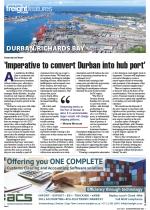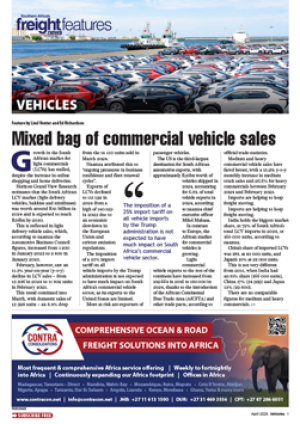South Africa needs to take a big-picture perspective if it wants to improve logistics efficiency while driving down cost. Considering that the country’s biggest port is situated some 500km from the economic hub of the country, delivering a solution has not always been easy. Warwick Lord, CEO of the Cato Ridge Logistics Hub Consortium, said there needed to be significantly more coordination of logistics in this country. “Government needs to be leading this by creating an enabling environment. All role players need to collaborate to enable a better and more efficient distribution channel emanating from the Durban port.”Congestion at the Port of Durban has impacted severely on logistics operations as it receives the bulk of the country’s imports and handles most of the exports.“ The operating methodology of the Durban port and city has grown organically over the last few decades. What is now needed is a systematic change to the way the port operates,” said Lord. “We are very glad that this has been recognised in the new Master Plan that Transnet has unveiled.”This plan aims to create a hub-status port at Durban as it offers the best opportunity to substantially increase the handling of transhipment volumes destined for ports in the broader SADC region. Addressing congestion at the port has been a top Transnet priority for some time. The need for a back-of-port operation has increasingly become clear. A Dry Port in Cato Ridge would significantly alleviate the port congestion, thus improving efficiency within the port and logistics to and from the economic heartland of the country in the north. According to Lord, the benefits not only include decongestion of the port, but coordinating truck movements also reduces the demand for additional road infrastructure. This alleviates pressure on the existing road infrastructure, thus reducing the cost of upkeep for these heavily used assets. “Ultimately we believe the Dry Port will play an important role in reducing the cost of logistics through quick turnaround times and seamless intermodal activities. Cargo will be collected and dispatched much more efficiently than what is currently the case.” He said the project Master Plan for Cato Ridge had been concluded and was aligned to the eThekwini Spatial Development Framework and the local area plan. Environmental authorisation of the KwaXimba N3 interchange has also been approved. “The development is making headway, with the outcome of the RFP over the Catcon site and the supply of wagons to TFR for the shuttle service being eagerly awaited. This will enable the operations at Cato Ridge to start. ”We believe the Dry Port will play an important role in reducing the cost of logistics through quick turnaround times and seamless intermodal activities.– Warwick Lord“

